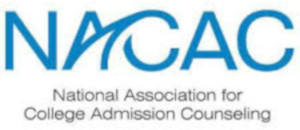As many of the families who depend on my gentle guidance are enthusiastically filling in the FAFSA and the CSS Profile this month, I have prepared the following simple, straight forward Guide to Financial Aid so that our children can make concrete plans for a lifetime of indentured servitude. I have summarized the sometimes complicated financial aid process into the following helpful phrase:
Move!
That’s it. You don’t have to read any more. You’re done. Nothing to see here. Move along. Go about your business.
But if you need more explicit instruction, let me flesh out this idea:
Move to one of those small socialist countries in the 1950s where education was subsidized by the government and post war prosperity was sweeping over a generation of boomers.
For those few, unfortunate readers without access to a working time machine, here is some even lengthier advice:
There are a great many resources available regarding financial aid, many of which are filled with actual useful information. Although there is something to be said for helpful information that would allow a family to fill in the forms competently and in a timely fashion, there is also the reality that financial aid is a morass of tangled concepts involving “income,” “assets,” “equity” and “secondary market for body parts” and that–let’s face it–you’re never going to understand the first thing about, never mind feel good about, the process. Shouldn’t we step back just for a moment to acknowledge that you, your family, and your heirs and assigns have done everything wrong from your first paper route to your present humiliating job? Isn’t it time for a financial aid guide that acknowledges that not only have you completely and utterly messed up but that you never had a chance from the beginning?
You’re still here? You haven’t followed through on my thoughtful insight into moving to Sweden in 1954? Then pay attention to the first critical concept: The Cost of the College is equal to the Expected Family Contribution plus the amount of the Aid Package. This simple concept is where every reasonable discussion of financial aid begins. Were it not for the fact that this equation is a complete and utter fabrication without a syllable of useful information, it might be helpful. Before cashing in your retirement account to invest in arsenic for dinner, here are the important definitions:
Cost of College. A Simple and straight forward phrase involving tuition, room and board and incidentals. To think about “incidentals,” think “Cost of Car” then add in “wheels.” “Oh, you wanted a motor with that vehicle?” the salesperson innocently asks. “Why didn’t you say so?”
Expected Family Contribution. The expected family contribution or “EFC” is determined by taking a percentage of dad’s income, a percentage of mom’s income and a percentage or the student’s income, adding a percentage of dad’s assets, a percentage of mom’s assets and a percentage of student’s assets. Through the miracle of modern arithmetic, the expected Family Contribution invariably equals “more money than you could ever possibly afford if you worked and saved for three lifetimes.”
Which brings us to the “Gap.” The “gap” is the amount of money you need to pay for college after the financial aid package doesn’t begin to cover what you can afford even after a man with a bad moustache has handed you a suitcase full of cash in exchange for your other kidney.
Remember that course in college where you sat down to take the final exam but the questions were so hard and so far outside what had been talked about in class that you were sure you were in the wrong room? Remember that dream you had about showing up to take that final only you weren’t wearing any clothes? These experiences will be helpful in preparing you for learning the amount of your “gap.” It is fairly well accepted in financial aid circles that the “gap” was modeled on the “Grand Canyon.” Only bigger. And harder to get across.
So the take away here is that your plan to retire at 82 was as optimistic as it was unrealistic. In addition to working until age 87, what are the more sensible options for financing your child’s education?
1) An activity that involves “Shootin’ at some food.”
2) Marrying into the Royal Family of any of the larger EU nations.
Last week I took my 1994 Honda Accord to the mechanic who said–I think I have this written down accurately–“The framistan lacking fluid may be nixed with the combobulator. I meld; do you have any Kings?”
“Ah, the combobulator,” I replied, nodding my head sagely. “Of course.”
I’m bringing my financial aid paper-work to my mechanic. I’m thinking they’ll get along well together.
David Altshuler, M.S.
(305) 978-8917 | [email protected]
About Me
David has toured hundreds of colleges, traditional boarding schools, and therapeutic programs. He has written books on admissions and parenting. His 500 articles on parenting, admissions, and children who learn differently are available here.
Recent Posts
Copyright © David Altshuler 1980 – 2022 | Miami, FL • Charlotte, NC | (305) 978-8917 | [email protected]


